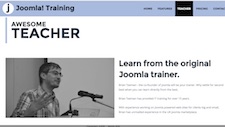Writing a blog post or any type of documentation on line is a challenge. One of the many things that I try to do is to write in a style that is appropriate for you the reader.
I am aware that for a large percentage of my readers English is not their first language. As a result I try to avoid using complex words, phrases or sentence structures. Of course I often fail but I do try.
Writing in "plain English" is a challenge but it is also important if I want to be sure that all my readers understand what I am trying to say.
Gobbledygook
Too often I read content that is pure gobbledygook and does more to confuse the reader than it does to educate, inform and explain.
- We're going forward with our plans to implement deconstructed digital hardware
- We need a more blue-sky approach to knowledge-based logistical processing.
- We need to cascade memos about our quality organisational mobility.
- It's time to revamp and reboot our regenerated asset time-phases.
Keep it short
Reading long pieces of text online is not easy so it is important to use as few words as possible.
Steve Krug in his book Don't make me think suggests that anyone writing content for the web should write their content, edit it by half and then by half again.
This might seem a challenge but after a while it becomes natural to write in shorter simpler English. Why use 30 words when just 10 would be enough.
Before
If there are any points on which you require explanation or further particulars we shall be glad to furnish such additional details as may be required by telephone.
After
If you have any questions, please phone.
Both versions are correct English but the first version is over complicated by using too many words and words that are not in everyday usage or that a non native English speaker will not have seen before.
Paragraphs
One thing that I have realised after writing this blog for several years is that I often ignore the rules of English grammar.
A paragraph should be a collection of sentences to explain a point that are separated by a new line.
You will see that I usually ignore this and separate sentences with a new line and perhaps add a heading to collect sentences. This is bad grammar but I find it makes it easier for me to read the content and I hope that you do as well.
Line length
There have been several studies into the effect of the line length on a readers and although none of them have been conclusive I find it easier to read short pieces of text with shorter line lengths.
That is why on the front page of this site you will see that the line length on the introductory texts are very short.
That's drivel
Drivel is a British word that is usually used to describe text that makes no sense. Although it is used in a negative way I personally find that if I am talking "drivel" it really means that I have not explained myself correctly and I should rewrite my text.
Drivel Defence
Since 1979 the Plain English Campaign have been Fighting for crystal-clear communication especially for government and corporate documents.
I came across their website recently, a Joomla powered one, and saw that amongst the campaign information they have a tool for drivel.
I have tested this article using the tool but have deliberately not altered anything so that you can see it for yourself. Like all automated tools it is not perfect but it can really help you to write in a simpler way.
The examples of gobbledygook above are from the Gobbledygook generator.






